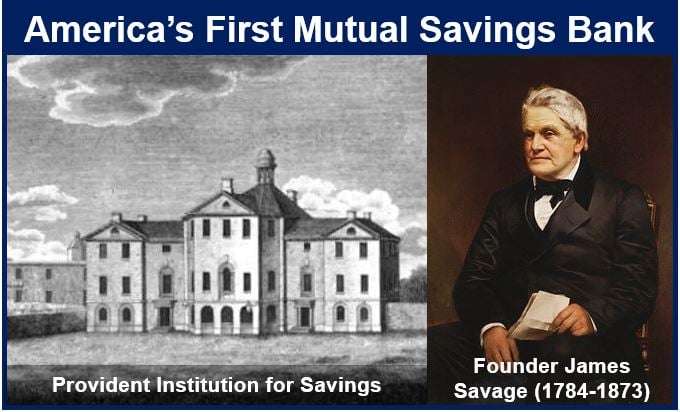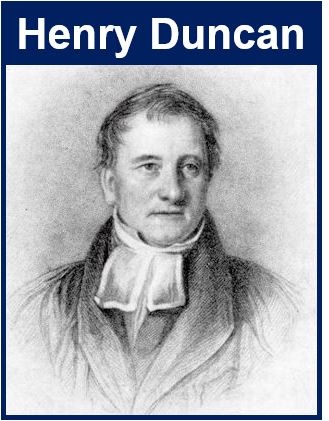A mutual savings bank is a bank, a type of thrift institution, chartered by a central or regional government that does not have shareholders, i.e. no capital stock. People who put their money into it own the financial institution.
Mutual savings banks were initially set up in the United States, specifically the Northeast and Mid-Atlantic regions of the country, to help low-income workers build up savings – put side a proportion of their disposable income that they had not spent. They would invest in long-term, fixed-rate assets such as mortgages.
The Savings and Friendly Society, organized by the Reverend Henry Duncan in 1810 in Ruthwell, Scotland, is identified by historians as the world’s first modern savings bank.
 The Courthouse, Court Square, where the Provident Institution for Savings first kept offices, 1817. It was the first chartered savings bank in the US. (Image: Wikimedia)
The Courthouse, Court Square, where the Provident Institution for Savings first kept offices, 1817. It was the first chartered savings bank in the US. (Image: Wikimedia)
The first American mutual savings banks – Boston’s Provident Institution for Savings and the Philadelphia Saving Society – were founded in 1816. There were more than 600 of these institutions in the US by 1910.
Mutual savings banks initially aimed at low-income households
Many of the early institutions, which were founded by philanthropists who wanted to encourage savings among low-income families, were named after coins such as The Dime or Salem Five Cents, because they would take deposits as small as five cents or a dime (ten cents).
There are two kinds of mutual savings banks – the older, state-chartered mutual that uses the corporator-trustee form of governance, and the federal mutual savings association, which began to emerge after the Home Owner’s Loan Act of 1933.
Both types of institutions, which are non-stock and built on the foundation of pledged deposits, have the mission to provide a means of savings for individuals who were discouraged or uncomfortable with the financial institutions of their day.
 Rev. Henry Duncan FRSE (1774-1846) was a Scottish minister, social reformer and geologist. He founded the world’s first commercial savings bank. (Image: Wikipedia)
Rev. Henry Duncan FRSE (1774-1846) was a Scottish minister, social reformer and geologist. He founded the world’s first commercial savings bank. (Image: Wikipedia)
A large number of the first savings associations pooled money that was collected in a barrel in the local bar or store, and loaned out as soon as enough funds had been accumulated.
According to the American Bankers Association:
“They (mutual savings banks) had limited hours and served immigrant and other populations. Their focus was home ownership and wealth accumulation. These were the institutions that the average citizen turned to after World War II to buy and finance their homes.”
America’s Mutual Banks says there are 577 such institutions in the US today (in 44 states). Massachusetts, with 111 mutual banks has the most, followed by Illinois (50), Ohio (47) and Pennsylvania (46).
Profits after deductions are shared among the members.
According to marketplacelists.com, mutual savings banks differ from other banks in the following way:
“The difference is that a Mutual Savings Bank is chartered in a way that the Depositors Own the Bank! In other words, the bank does not have shareholders that keep the profits, in the likes of the Citigroups and the JP Morgans of the world. The profits, if any, are somehow passed on to the Depositors.”
The British equivalent of a mutual savings bank is a ‘building society’, which first emerged in the 18th century from cooperative savings groups.
